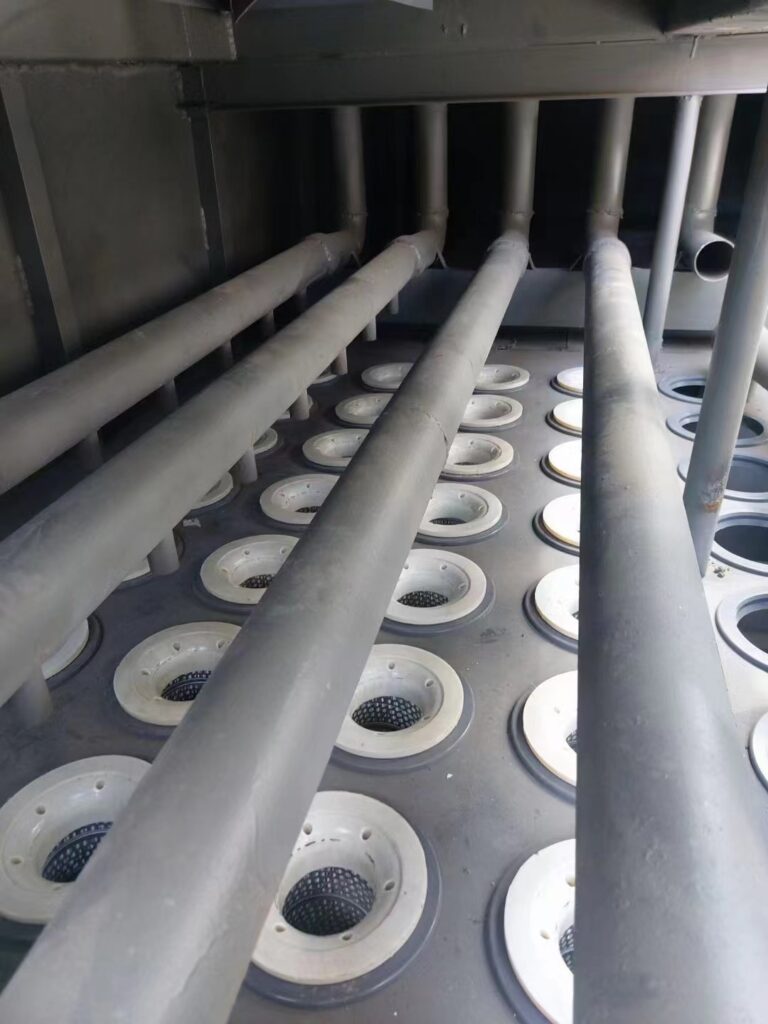When it comes to maintaining a baghouse system, one of the essential tasks is changing the filter bags. Properly replacing these bags is crucial for ensuring the continued efficiency and effectiveness of the dust collection process. In this guide, we’ll walk you through the step-by-step process of changing filter bags for your baghouse system.
1. Preparation:
Before beginning the process of changing filter bags, it’s essential to make adequate preparations to ensure a smooth transition. Here are some key steps to follow:
- Assess Requirements: Start by determining the number and specifications of the filter bags you need to replace. Ensure that the new bags match the size, material, and performance of the existing ones.
- Gather Tools: Collect the necessary tools for the job, including a toolbox, filter bag clamps, cleaning tools, and any other equipment required for the replacement.
- Plan Ahead: Create a detailed plan for the replacement process, including the timing, location, personnel, and steps involved. Planning ahead will help ensure a seamless execution of the replacement.
- Training: Provide necessary training to personnel involved in the replacement process. Ensure they understand the steps involved, safety precautions, and emergency procedures.

2. Replacement Process:
- Shutdown: Begin by shutting down the baghouse system and disconnecting the power and air supply. Ensure that the equipment is completely stationary before proceeding with the replacement.
- Remove Old Bags: Use filter bag clamps to carefully remove the old filter bags from the baghouse system. Take precautions to avoid direct contact with hot components or mechanical damage during removal.
- Install New Bags: Install the new filter bags into the baghouse system according to the specified orientation and position. Ensure that the bags are properly positioned and securely fastened.
- Check Seal: Inspect the seal of the installed bags to ensure they are airtight and free from leaks. Use sealant or other sealing materials if necessary to ensure proper sealing between the bags and the baghouse system.
- Restart: Once the replacement is complete, restart the baghouse system and conduct testing. Check the operation of the equipment to ensure that the newly replaced bags are functioning correctly.
- Clean Up: After the replacement is finished, clean up the work area and properly dispose of old bags and tools. Maintain a clean and safe work environment for future operations.
3. Safety Precautions:
During the process of replacing filter bags, it’s essential to observe safety precautions to ensure the well-being of personnel and equipment:
- Follow Procedures: Adhere to established procedures for the replacement process and follow the designated steps carefully to avoid accidents.
- Protective Gear: Wear appropriate protective gear, including helmets, safety glasses, and gloves, to prevent potential injuries during the replacement process.
- Avoid High Temperatures: Take precautions to avoid direct contact with high-temperature components during bag removal and installation. Use suitable insulation materials for protection if necessary.
- Prevent Mechanical Injuries: Be mindful of potential mechanical hazards during bag handling. Avoid using improper tools or methods that could cause damage or injury.
- Emergency Response: Be prepared to respond to emergencies such as fires or equipment malfunctions promptly. Shut down the equipment and follow established emergency procedures as needed.

4. Post-Replacement Maintenance:
After completing the bag replacement, it’s important to perform ongoing maintenance to ensure the continued operation and longevity of the baghouse system:
- Regular Inspections: Conduct regular inspections of the filter bags to monitor their condition. Promptly address any issues such as damage or leaks by repairing or replacing the affected bags.
- Scheduled Cleaning: Implement a regular cleaning schedule for the baghouse system based on usage. Clean the system carefully to avoid damaging the filter bags or equipment components.
- Recordkeeping: Maintain detailed records of the replacement process, including inspection results, maintenance activities, and any issues encountered. This information will help track the performance and lifespan of the filter bags and equipment.
- Training and Education: Provide ongoing training and education to personnel involved in the operation and maintenance of the baghouse system. Ensure they understand how to use and maintain the system properly to optimize its performance and lifespan.
- Equipment Upgrades: Stay informed about advancements in baghouse technology and consider upgrading equipment or materials to improve performance and longevity. Investing in upgrades can help enhance the efficiency and effectiveness of the dust collection process.
By following these steps and precautions, you can effectively change the filter bags for your baghouse system and maintain optimal performance and safety. Remember to prioritize safety, proper planning, and ongoing maintenance to ensure the continued success of your dust collection operations.
